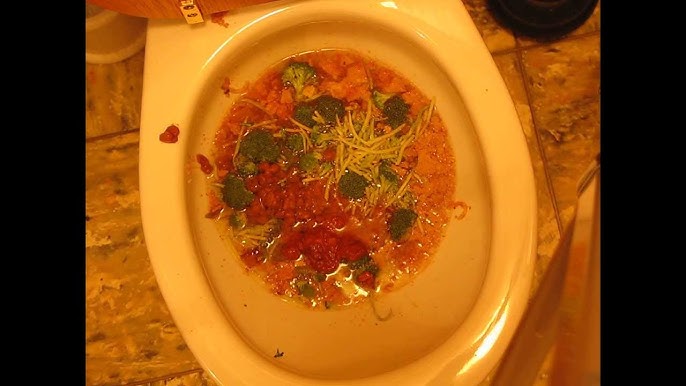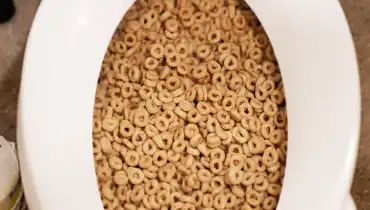Can You to Dispose of Food in the Toilet?
CallThis post directly below about What Can Happen If You Flush Food Down the Toilet? is exceedingly insightful. Don't miss it.

Intro
Lots of people are frequently faced with the issue of what to do with food waste, especially when it concerns leftovers or scraps. One common inquiry that arises is whether it's okay to purge food down the bathroom. In this short article, we'll delve into the reasons that individuals might consider flushing food, the effects of doing so, and different methods for proper disposal.
Reasons why individuals could take into consideration purging food
Absence of understanding
Some people may not understand the potential damage brought on by flushing food down the bathroom. They may incorrectly think that it's a harmless technique.
Benefit
Purging food down the bathroom might appear like a quick and very easy solution to taking care of undesirable scraps, specifically when there's no neighboring trash can available.
Laziness
In some cases, individuals may merely pick to flush food out of sheer laziness, without considering the effects of their actions.
Consequences of flushing food down the commode
Environmental effect
Food waste that winds up in waterways can contribute to air pollution and damage marine environments. Additionally, the water utilized to flush food can strain water resources.
Plumbing problems
Flushing food can cause clogged pipelines and drains pipes, creating pricey pipes fixings and troubles.
Sorts of food that must not be flushed
Coarse foods
Foods with fibrous textures such as celery or corn husks can obtain tangled in pipelines and trigger clogs.
Starchy foods
Starchy foods like pasta and rice can take in water and swell, leading to blockages in pipelines.
Oils and fats
Greasy foods like bacon or cooking oils should never ever be flushed down the toilet as they can strengthen and create obstructions.
Proper disposal techniques for food waste
Making use of a garbage disposal
For homes furnished with garbage disposals, food scraps can be ground up and flushed with the plumbing system. Nevertheless, not all foods appropriate for disposal in this fashion.
Recycling
Specific food packaging materials can be reused, minimizing waste and decreasing ecological effect.
Composting
Composting is an environmentally friendly method to deal with food waste. Organic materials can be composted and used to improve soil for horticulture.
The relevance of appropriate waste management
Reducing ecological harm
Correct waste administration practices, such as composting and recycling, aid reduce pollution and protect natural deposits for future generations.
Securing pipes systems
By preventing the method of flushing food down the commode, property owners can avoid expensive plumbing repairs and keep the honesty of their pipes systems.
Conclusion
To conclude, while it may be tempting to purge food down the toilet for benefit, it is necessary to recognize the possible repercussions of this action. By adopting correct waste monitoring methods and disposing of food waste responsibly, people can add to healthier pipes systems and a cleaner environment for all.
FLUSH FOOD DOWN THE TOILET?
FLUSHING FOOD CAN CAUSE BLOCKED DRAINS IN YOUR HOME
All of the plumbing fixtures in your home are connected to the same sewer pipe outside of your home. This outdoor sewer pipe is responsible for transporting all the wastewater from your home to the Council sewer mains. Even small pieces of food that go down the kitchen sink can cause problems for your sewer. It should therefore be obvious that flushing larger bits of food, such as meat, risks a clog in either the toilet itself or the sewer pipes. Flushing greasy food is even more problematic because oil coagulates when it cools, coating the interior lining of your pipes.
THE TOILET IS NOT A BIN
Food isn’t the only thing that people shouldn’t be flushing down the toilet. People use the toilet to dispose of all kinds of things such as tampons, makeup wipes, dental floss, kitty litter and even underwear. Water goes to great lengths to educate residents about the high costs and stress placed on wastewater treatment systems simply from people flushing the wrong stuff down the toilet. It costs taxpayers millions of dollars each year, and homeowners thousands in blocked drain repairs.
FLUSHING FOOD IS A WASTE OF WATER
Flushing food is a waste of our most precious resource - water. In June this year Level 1 water restrictions were introduced to protect water supply from drought conditions. Much of New South Wales continues to be affected by prolonged drought with recent figures revealing up to 97 per cent of the state remains in drought. Depending on whether you have a single or dual flush toilet, every single flush uses between five and 11 litres of water. In the current climate this is a huge amount of water to be wasting on flushing food that should be placed in the bin (or better yet, the compost).
https://www.jabplumbingsolutions.com.au/blog/can-you-flush-food-down-the-toilet

As an avid person who reads about Think Twice Before Flushing Food Down Your Toilet, I assumed sharing that piece was essential. If you appreciated our page please make sure you remember to pass it around. I treasure your readership.
Click On This Link